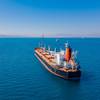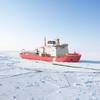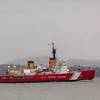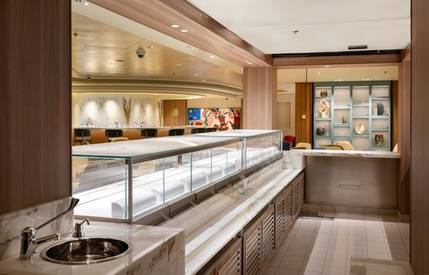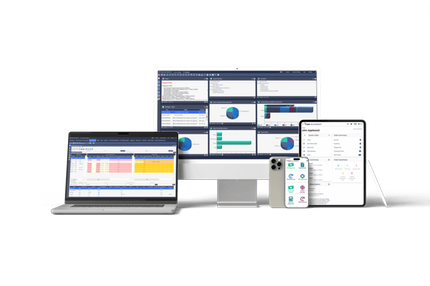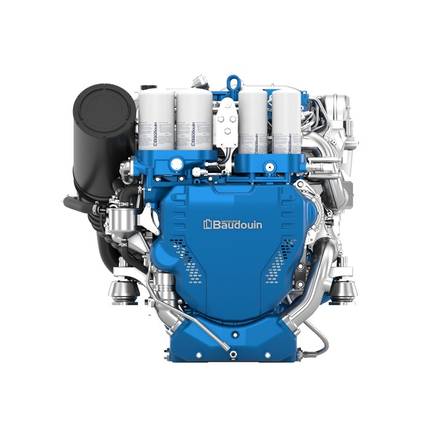Tsakos Energy Financial Results
Nine new charters with minimum revenue of $220 million over a 2.4 year period Operating income at $11.9 million (a 159% increase)
Nine-Month Hightlights
- Voyage revenues of $293.7 million
- Positive EBITDA generated from all operational ships totalling $87.7 million
- $11.9 million in operating income vs. $4.6 million in nine-months 2011 (159% increase)
- 24% improvement in the net results, ($24.9) million loss vs. ($32.9) million loss in ninemonths 2011
- Maintained strong balance sheet
- Nine new charters with minimum revenues of over $220 million and 2.4 years average employment
- 33 vessels out of a pro-forma fleet of 51 on fixed employment utilization
- Constant quarterly dividend payments ($0.50 per share in 2012). $9.575 per share in total dividends since NYSE listing in 2002
- Active fleet utilization of 98% - Maintenance of tight cost control
- Fleet average age 6.2 years – Agreement to sell two older vessels
- Further expansion in LNG and shuttle sectors
- Accretive re-charter of the LNG Neo Energy
Tsakos Energy Navigation Limited (TEN or the “Company”) (NYSE: TNP) has reported results (unaudited) for the first nine months of 2012 and third quarter.
Nine Month Results
Revenues, net of voyage expenses and commissions, in the first nine months of 2012, totaled $202.4 million, an improvement of $10.6 million over the first nine months of 2011. TEN operated an average of 48.0 vessels as compared with 47.7 vessels in the first nine months of 2011, although the VLCC La Prudencia did not operate in the first nine months of 2012, and the La Madrina operated only for five months. The average daily time charter equivalent rate per vessel was $17,152 compared to $16,146 in the first nine-months of 2011.
Voyage expenses were significantly reduced due to the absence of the long repositioning voyages taking place in 2011 and reduced bunker consumption. Operating costs for the first nine months of 2012 were at $100.8 million. For the nine-months 2012, depreciation and dry-docking amortization costs were $74.9 million compared to $78.5 million in the previous year first nine-months. General and administrative expenses totaled $2.8 million, compared to $3.0 million in the first nine months of 2011. Interest and finance costs decreased in the first nine months of 2012 to $37.8 million from $38.9 million in the prior nine month period, mainly due to positive non-hedging swap valuation movements. In the first nine months of 2012, there was a net loss of $24.9 million, compared to a $32.9 million net loss in the prior nine month period.
Third Quarter Results
Revenues, net of voyage expenses and commissions, were $64.2 million in the third quarter of 2012, an increase of 15.5% over the third quarter of 2011, in a market that fell to depressingly low levels as seasonal weakness combined with tanker oversupply forced rates down. On average, TEN’s fleet had 48.0 vessels (including the non-operating VLCCs La Prudencia and La Madrina which are held for sale) versus 47.7 vessels in the prior year quarter. Excluding these two inactive VLCC vessels, fleet utilization remained high at 98%. The average daily time charter equivalent rate per vessel was $16,602 compared to $14,055 in the third quarter of 2011. Rates for all vessel categories were better than those of the third quarter of 2011 except for the suezmaxes where rates achieved by those on spot or profit-share were down, but again this was outweighed by the impact of the LNG carrier, Neo Energy, earning substantially more than in
the third quarter of 2011.
There was little change in total operating costs for the third quarter of 2012 at $33.1 million versus the $33.0 million for the third quarter of 2011. Similarly, average daily operating costs per vessel were $7,663 in the third quarter of 2012 compared to $7,681 in the same period of 2011, with higher repair costs due to extra dry-dockings being offset by reductions in most other categories of expense, in part due to a strengthening of the dollar over the Euro by 11.5%. Again, the technical managers were able to achieve cost savings on purchases in a difficult environment while striving to maintain the highest standards in safety and quality of the vessels and the operations.
Depreciation and dry-docking amortization costs totaled $25.2 million in the third quarter of 2012 compared to $27.1 million in the third quarter of 2011, the decrease being mainly due to ending of depreciation following the categorization as held for sale of the two older VLCCS at the end of 2011. Technical and commercial management fees were approximately the same as in the previous third quarter at just under $4.0 million. G&A costs increased by over $200 thousand mainly due to professional fees associated with new growth projects the Company has been investigating.
Interest and finance costs at $11.3 million were nearly 27% less in the third quarter of 2012 than the previous third quarter. This was mainly due to positive swings over the twelve months from the previous valuations of non-hedging interest rate and bunker swaps attained in the third quarter of 2011.
The third quarter of 2012 ended in a net loss of $10.4 million or $0.18 loss per share compared to a net loss of $24.1 million or $0.52 loss per share in the third quarter of 2011. TEN’s liquidity at the end of the third quarter of 2012 remained strong. Total cash and liquid investments amounted to $164 million. Cash flow from net income before depreciation, amortization and finance costs (“EBITDA”) was $26.2 million. Despite the very difficult market, apart from the two non-active VLCCs and four other vessels, all the other vessels generated positive EBITDA in the quarter and all active vessels in the nine-months generated positive EBITDA. Total indebtedness since the third quarter of 2011, was reduced by $76 million to September 30, 2012. TEN continues to pay all its debt service obligations as they become due and believes it is capable of maintaining that record.
Quarterly Divided
As announced , the Board of Directors has declared a quarterly dividend of $0.05 per share payable on December 20, 2012 to shareholders of record as of December 14, 2012. This brings the total dividends for calendar 2012 to $0.50 per share. Inclusive of this distribution, TEN has distributed in total $9.575 per share in dividends to its shareholders since the Company was listed on the NYSE in March 2002.
Fleet Strategy & Outlook
Although the third quarter is seasonally the weakest for energy transportation demand, certain glimpses in trading patterns and rates did emerge which offered insights of things that may come. During this quarter, crude tanker spot rates improved somewhat and exhibited a certain stability. On the product side, rates experienced a noticeable uplift thanks to refinery closures in Europe and the US which, coupled with increased refinery capacity in the Far East and notably
in Saudi Arabia, India and China produced increased ton-mile demand and hence a healthier market environment. As freight rates seem to be slowly negotiating themselves out of the doldrums, we enter the expected “strong” fourth quarter of the year in the hope that the sector upturn evident in the prior quarter will eventually return to exhibit signs of a sustainable recovery. The improving supply situation is helping in that direction as the orderbook continues its downward trend. According to Clarkson Research Services, today it stands at 11.7% of the fleet as opposed to 12.6% in June 2012 and 14.4% at end of 2011. By comparison, at end of 2010, the year when shipping rates took an abrupt and severe turn for the worse, the fleet orderbook stood at 22.3%. This declining orderbook is coupled with a healthy oil demand outlook for 2013, 90.5mbpd vs. 89.7mbpd in 2012 according to the International Energy Agency. In addition, special attention should be paid to certain geopolitical events around the world as they tend to increase oil demand and freight rates.
Looking ahead, management remains cautiously optimistic for the medium to long-term outlook of the tanker industry and is of the opinion that shipping will present interesting opportunities for longer term investments. Moreover, the expected delivery of the two shuttle tanker newbuildings just a few months away, the ice-class features in 21 vessels of the fleet particularly with the upcoming winter months in Northern Europe and North America, together with the Company’s presence in LNG markets provide the necessary versatility to maintain its long stated objective of healthy shareholder returns including dividend payments. “High fleet utilization, tight cost control, fleet modernity, our long term employment profile, together with our strong balance sheet have allowed TEN to navigate safely through this market downturn that started in late 2008,” stated Mr. George V. Saroglou, Chief Operating Officer of TEN. “Looking ahead, we think the worst is behind us as supply of vessels shrinks while global oil demand continues to increase,” Mr. Saroglou concluded.



